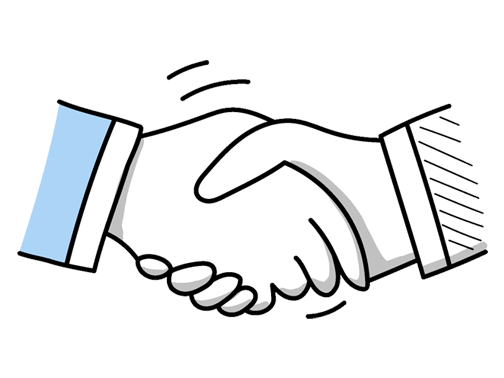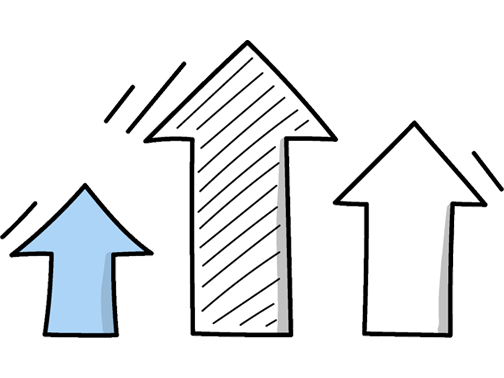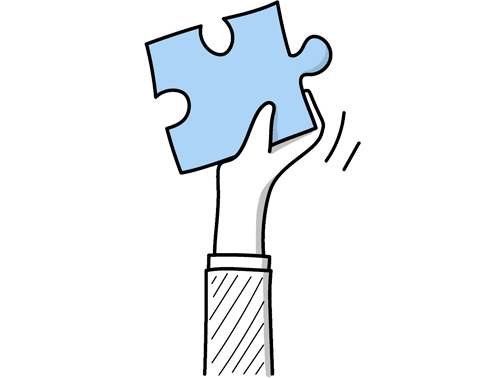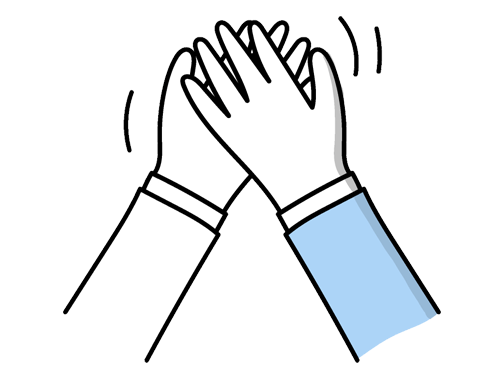Print Technician Interview Questions (2025 Guide)
Find out common Print Technician questions, how to answer, and tips for your next job interview
Practice Interviews Online - Identify your strengths and weakness in a realistic Print Technician mock interview, under 10 minutes
Practice Now »Print Technician Interview Questions
Questions like this assess your teamwork and communication skills in a fast-paced environment where collaboration is essential. You need to explain a specific example showing how you coordinated with others to meet deadlines and ensure quality, highlighting your role and the positive outcome.
Example: Sure. In my previous role, we had a tight deadline to produce hundreds of brochures for a client event. I coordinated with the design team to ensure files were print-ready and worked alongside operators to manage presses and troubleshoot issues. Clear communication and mutual support helped us finish on time and maintain quality, making the project a real team effort I’m proud of.
What they want to understand is your ability to stay calm, listen actively, and resolve conflicts professionally to maintain customer satisfaction. You need to say that you listen carefully to the customer's concerns, empathize, and work collaboratively to find a solution that meets their expectations.
Example: When a customer isn’t happy with the final print, I listen carefully to understand their concerns and stay calm. I try to find a solution that works, whether it’s reprinting or adjusting the design. For example, once a client wasn’t satisfied with colour quality, so I discussed their preferences, made tweaks, and delivered a better result. Keeping communication open helps turn those situations around.
Questions like this help interviewers gauge your familiarity and expertise with the role’s technical demands. You need to clearly state your total years of experience as a print technician and briefly mention key equipment or skills you’ve used that show your hands-on knowledge.
Example: I’ve spent around five years working closely with print technology, managing both digital and traditional presses. In my previous role, I helped streamline the maintenance process, which reduced downtime by 15%. I’m comfortable troubleshooting various machines, and I’ve gained hands-on experience with colour calibration and quality control to ensure consistent, high-quality prints every time.
What they want to know with this question is how your past experience makes you a good fit for the print technician role. You need to clearly describe your relevant jobs and skills, like expertise in color calibration or quality control, and mention any achievements that show your ability to improve print processes.
Example: In my previous role as a print assistant, I managed large-format printers and ensured quality control, which sharpened my attention to detail. I also troubleshot machine issues under tight deadlines, keeping production on track. Working closely with design teams taught me to balance technical precision with creative requirements, a skill I’m eager to bring to this print technician role.
Questions like this assess your problem-solving skills and technical knowledge in real-world situations. You need to explain how you start by checking error codes, identify whether the issue is hardware or software related, and then fix it by performing adjustments followed by a test print to ensure the problem is resolved.
Example: When I encounter a printing error, I start by checking the obvious—paper jams, ink levels, and connection issues. From there, I look deeper, like examining driver settings or print queue problems. Once I pinpoint the cause, I apply the right fix, whether it’s cleaning the printhead or updating software, then print a test page to make sure everything’s running smoothly again. It’s about a clear, step-by-step approach.
Hiring managers ask this question to see how you troubleshoot problems and ensure quality. You need to explain that you first check the printer settings and materials, then identify and fix any errors before running the job again.
Example: When a print job doesn’t meet expectations, I start by checking the file and settings to ensure everything matches the client’s requirements. Then, I inspect the printer for any issues like low ink or paper jams. Sometimes, a quick test print helps identify the problem. Once fixed, I communicate clearly with the team or client to confirm the results. It’s all about being thorough and keeping things running smoothly.
What they want to know is how you approach challenges with innovation and resourcefulness in your role. You need to describe a specific situation where you identified the problem, came up with an original solution, and successfully fixed the printing issue.
Example: In a previous role, we faced colour mismatches on a tight deadline. Instead of reprinting everything, I adjusted the printer’s calibration settings and used custom ICC profiles to achieve the right shade quickly. This saved time and materials, ensuring the client was happy without delays. It taught me how small technical tweaks can resolve big issues creatively under pressure.
This interview question helps assess your ability to manage time and quality under pressure, which is crucial for meeting client deadlines in printing. You need to explain how you prioritize jobs by urgency, maintain print quality consistently, and communicate clearly with your team or clients about progress and timelines.
Example: When juggling several print jobs with tight deadlines, I start by clarifying which projects need immediate attention and organize them accordingly. I focus on maintaining quality by setting realistic steps for each task, so nothing gets rushed. Keeping everyone informed—whether the team or clients—helps manage expectations and avoid surprises. For example, I once reordered jobs after a client moved their deadline, ensuring we delivered on time without compromising standards.
This interview question helps the employer understand how you handle communication and ensure customer satisfaction under time-sensitive and technical conditions. You need to say that you communicate clearly about timelines, listen carefully to customer needs, and set realistic goals to meet their expectations effectively.
Example: When managing customer expectations, I make it a point to keep communication straightforward and transparent, especially about deadlines or any challenges that might arise. I also take time to really hear what the customer needs, which helps in tailoring solutions that fit their goals. For example, if a job might take longer due to material availability, I let them know early, so we can adjust plans without surprises.
This question is designed to see how you take initiative and prioritize customer satisfaction beyond your usual responsibilities. In your answer, describe a specific situation where you proactively solved a problem, communicated clearly with the customer, and collaborated with your team to ensure the best outcome.
Example: Certainly. Once, a client urgently needed a large print order corrected last minute. I quickly identified the issue, communicated clearly about the delay, and stayed late to reprint everything without extra charge. Collaborating with my team, we ensured the final product met their expectations. Seeing their relief made it clear that going a step further really makes a difference in customer trust and satisfaction.
Employers ask this to see if you can keep your team coordinated and productive by sharing important information clearly and handling issues quickly. You need to say that you communicate regularly with updates, listen carefully to your teammates, and address any problems early to keep the team working smoothly.
Example: I make sure to keep everyone in the loop by sharing information clearly and directly. When issues come up, I address them early by discussing solutions openly with the team. I also listen carefully to everyone’s input, which helps us avoid misunderstandings and work more smoothly together. For example, when a job’s deadline changed last minute, we quickly regrouped and adjusted tasks so the project stayed on track.
Interviewers ask this question to gauge your hands-on experience and familiarity with different printing processes and materials. You need to briefly describe the types of projects you've handled, highlighting your skills and the variety of printing methods you've used.
Example: In my previous roles, I’ve handled a broad range of printing projects—from large-scale banners and posters to high-quality brochures and business cards. I’ve enjoyed working on both digital and offset printing, ensuring clarity and color accuracy. One memorable project was producing marketing materials for a local event, which required tight deadlines and meticulous attention to detail to get everything just right.
This interview question is asked to ensure you understand the importance of keeping printing equipment in good working order to prevent downtime and costly repairs. You need to explain how you regularly inspect parts like rollers and belts, perform cleaning and lubrication tasks methodically, and document all maintenance activities and any problems you find.
Example: I usually start with routine checks to spot any signs of wear or misalignment before they cause issues. Cleaning the rollers and lubricating moving parts is part of my regular process to keep machines running smoothly. When problems arise, I troubleshoot carefully and log all maintenance actions to track patterns and improve future upkeep. For example, catching a worn belt early once saved us from a costly breakdown during a busy print run.
What they want to know is if you understand the key factors that affect print quality and how you proactively control them. You need to say that you carefully check color accuracy, alignment, and material quality, and consistently perform test prints and inspections to catch issues early.
Example: To ensure print quality, I start by carefully checking the originals and calibrating the printer settings to match. Throughout the process, I run test prints to catch any issues early and adjust as needed. For example, when working on a brochure, I compare colours and alignment against the proof to keep everything sharp and consistent. Attention to detail and staying hands-on really helps maintain high standards every time.
Hiring managers ask this question to assess your technical skills and ensure you can efficiently handle print design and production processes. You need to mention the specific design and job management software you know, like Adobe Creative Suite or RIP software, and briefly explain how you use them to produce high-quality prints.
Example: I’m experienced with Adobe Creative Suite, especially Photoshop and Illustrator, which are great for preparing print-ready designs. I also use RIP software like EFI Fiery to manage and optimize print jobs efficiently. These tools help ensure accurate colour reproduction and smooth workflows, whether it’s for large-format prints or detailed promotional materials.
What they want to know is how you maintain teamwork and productivity during conflicts by communicating well, staying calm, and resolving issues collaboratively. You should say you listen actively to understand all viewpoints, keep your emotions controlled, and work with the team to find and agree on a practical solution together.
Example: When conflicts arise, I focus on listening carefully to everyone’s viewpoint to understand where they’re coming from. Staying calm helps keep the conversation constructive. I find that by encouraging open dialogue, we can identify the real issue and work together on a solution that suits the whole team. For example, once a scheduling clash was resolved simply by discussing priorities and adjusting shifts fairly.
This question assesses your technical knowledge and problem-solving skills in achieving accurate color output. You should explain your step-by-step process for calibrating printers with color profiles, how you adjust for different materials, and share examples of how you troubleshoot color mismatches effectively.
Example: When handling color calibration, I start by regularly profiling our printers and monitors to keep everything consistent. I’m familiar with adjusting settings based on the material—like tweaking for gloss or matte finishes. If colors don’t match as expected, I compare proofs closely and adjust ink densities or profiles accordingly. Once, on a textured paper job, a small tweak in the ICC profile made all the difference, ensuring the final print matched the client’s brand colours perfectly.
This question assesses your problem-solving skills and ability to stay calm under pressure in a technical role. You need to explain the specific issue, the steps you took to identify the cause, and how you fixed it efficiently.
Example: In a previous role, the main press jammed mid-run, risking a missed deadline. I calmly stopped the machine, inspected it for paper dust and misfeeds, then realigned the rollers. I also checked the sensors and cleaned them to ensure accuracy. After running a test print, everything worked smoothly, and we delivered on time. Staying methodical and patient helped me resolve the issue without panic or delay.
Interviewers ask this question to understand how you function within a team and how your behavior supports print production goals. You should clearly describe your typical team role, highlight your communication and collaboration skills, and give examples showing your flexibility and willingness to help in various tasks.
Example: In a team, I usually take a hands-on role, focusing on clear communication and supporting everyone to keep projects on track. I’m comfortable stepping up to lead or pitch in wherever needed, whether that’s troubleshooting a printer or coordinating schedules. For example, during a busy print deadline, I helped streamline tasks by checking equipment while others handled client updates, making sure we delivered on time.
Questions like this help interviewers gauge your technical knowledge and practical experience with various printing methods. You should clearly describe the specific printing technologies you've worked with, their pros and cons, and share examples of how you've resolved related problems on the job.
Example: I’ve worked mainly with digital and screen printing. Digital printing is great for quick turnaround and detailed images, though it’s less cost-effective for large runs. Screen printing handles bulk orders well, especially on textiles, but setup can be time-consuming. In one role, I troubleshooted colour inconsistencies in digital prints by recalibrating the printer, which improved output quality significantly. I enjoy adapting to each technology’s strengths to meet project needs efficiently.
What they want to hear is how you handle pressure and problem-solving in your role. You need to describe a specific printing challenge, explain how you adjusted your approach to overcome it, and end with the positive result and lesson learned.
Example: Sure. Once, a large batch needed urgent printing, but the colours kept coming out off. I checked the calibration and spotted a misaligned cartridge. I carefully realigned it, ran test prints to ensure consistency, and completed the job on time. That experience taught me the importance of patience and thorough checks, especially when working under tight deadlines.
Employers ask this question to see if you can communicate clearly, adapt your teaching to different skill levels, and support team growth. You need to explain how you simplified complex tasks, adjusted your training to individual needs, and regularly checked progress to help juniors improve.
Example: Yes, I’ve guided junior print technicians by first understanding their current experience and then tailoring my explanations to suit their needs. I focus on breaking down complex tasks into manageable steps and encourage questions throughout. For example, when training someone new on a press setup, I’d walk them through each stage, making sure they feel confident before moving on. Supporting their growth not only improves their skills but also strengthens the whole team.
What they want to know is how you work well with others to achieve common goals, especially in managing print quality and deadlines. You should describe your specific role, how you communicated with teammates, and the positive outcome your collaboration helped achieve.
Example: In my previous role, our team worked together to launch a new print product under a tight deadline. I managed the print setup and ensured quality control, while keeping close communication with design and logistics. Regular check-ins helped us address issues quickly. The project finished on time, and the product received great feedback for its sharp quality, which I was proud to contribute to through careful attention and teamwork.
Questions like this assess your ability to manage customer dissatisfaction professionally while maintaining quality service. You need to say that you listen carefully to understand the complaint, investigate the issue promptly, and communicate solutions clearly to ensure customer satisfaction.
Example: When a customer raises concerns about print quality or delays, I first listen carefully and show I understand their frustration. Then, I look into what might be causing the problem—whether it’s a machine issue or a workflow bottleneck—and keep them updated throughout. If needed, I offer alternatives, like reprints or expedited service, to make sure they leave satisfied and confident in our support.
This question assesses your ability to avoid misunderstandings that can lead to errors or delays in print orders. You need to say that you clarify customer requirements by asking detailed questions, confirm all details before proceeding, and keep the customer updated throughout the process.
Example: Clear communication starts with listening carefully to the customer’s needs and confirming details early on. I make sure to keep them updated if there are any changes or delays. For example, if a print order requires extra time for colour matching, I explain why and provide a realistic timeline. Keeping everything transparent helps build trust and ensures the final product meets their expectations.
Ace your next Print Technician interview with even more questions and answers
Common Interview Questions To Expect
The interviewer is looking to see how you found out about the job opening. You can answer by mentioning a job board, company website, referral, networking event, or social media.
Example: I actually found out about this position through a job board online. I was actively searching for print technician roles and came across this opportunity. It seemed like a perfect fit for my skills and experience.
The interviewer is looking for your motivation, passion, and understanding of the role. You can answer by discussing your skills, experience, interest in the industry, or alignment with the company's values.
Example: I've always had a passion for print technology and love the hands-on aspect of being a Print Technician. I have experience working with various printing equipment and software, and I am excited about the opportunity to further develop my skills in this role. I also admire your company's commitment to innovation and quality, which aligns with my own values.
Candidates can answer by stating a specific salary range, mentioning their flexibility, or asking about the company's budget. Interviewers are looking for candidates who are realistic, confident, and have done their research on industry standards.
Example: I'm looking for a salary in the range of £25,000 to £30,000, but I'm open to negotiation based on the overall compensation package. I've done some research on industry standards and believe this range is fair for my level of experience and skills. Can you provide any insight into the company's budget for this position?
The interviewer is looking for a candidate who has done their research on the company, understands its products/services, values, and culture. Answers should demonstrate knowledge and interest in the company.
Example: I've done some research on your company and I know that you specialize in high-quality printing services for various industries. I also read about your commitment to sustainability and using eco-friendly materials in your production process. I'm excited about the opportunity to work for a company that values both quality and environmental responsibility.
Interviewers are looking for honesty, professionalism, and a positive attitude in your response. Be prepared to explain any reasons for leaving your previous job in a constructive manner.
Example: I left my last job because I was looking for new challenges and opportunities for growth in my career. I enjoyed my time there, but I felt like I had reached a plateau and wanted to expand my skills in a different environment. I'm excited about the possibility of bringing my experience to this new role and continuing to develop as a Print Technician.
Company Research Tips
The company's website is a goldmine of information. Look for details about the company's history, mission, values, and culture. Pay special attention to any information related to the print industry or the specific role of a Print Technician. This can give you insights into the company's priorities and the skills they value in their employees. Also, check out their product or service pages to understand what they offer and how your role might contribute to these offerings.
Tip: Don't just skim the website; take notes and think about how the information you find relates to your role as a Print Technician.
Social media platforms can provide a more informal view of the company. Look at their posts on platforms like LinkedIn, Twitter, and Facebook to see how they interact with their audience. This can give you a sense of the company's brand voice and values. Also, look for any posts related to the print industry or the role of a Print Technician to get a sense of how this role fits into the company.
Tip: Look at the comments on the company's posts to see how they respond to feedback and criticism. This can give you a sense of their customer service and conflict resolution skills.
Stay updated with the latest news and trends in the print industry. This can help you understand the challenges and opportunities the company might be facing. Look for news articles, blog posts, and industry reports related to the print industry. Also, consider subscribing to industry newsletters or following industry influencers on social media.
Tip: Try to relate the industry trends and news back to the company and your role as a Print Technician. This can help you come up with insightful questions to ask during the interview.
Understanding the company's competitors can give you a broader view of the industry landscape. Look at the competitors' websites and social media platforms to see how they position themselves in the market. This can help you understand the company's unique selling points and how they differentiate themselves from their competitors.
Tip: Use this information to show how you can help the company stay competitive in the market. For example, you might suggest ways to improve their print processes or customer service based on what you've learned from their competitors.
What to wear to an Print Technician interview
- Smart casual attire
- Clean, ironed shirt or blouse
- Dark-coloured trousers or skirt
- Comfortable, polished shoes
- Minimal accessories
- Neat and tidy hairstyle
- Light, professional makeup for women
- Avoid flashy colours or prints
- Carry a neat portfolio or bag
- Wear a light, pleasant fragrance





